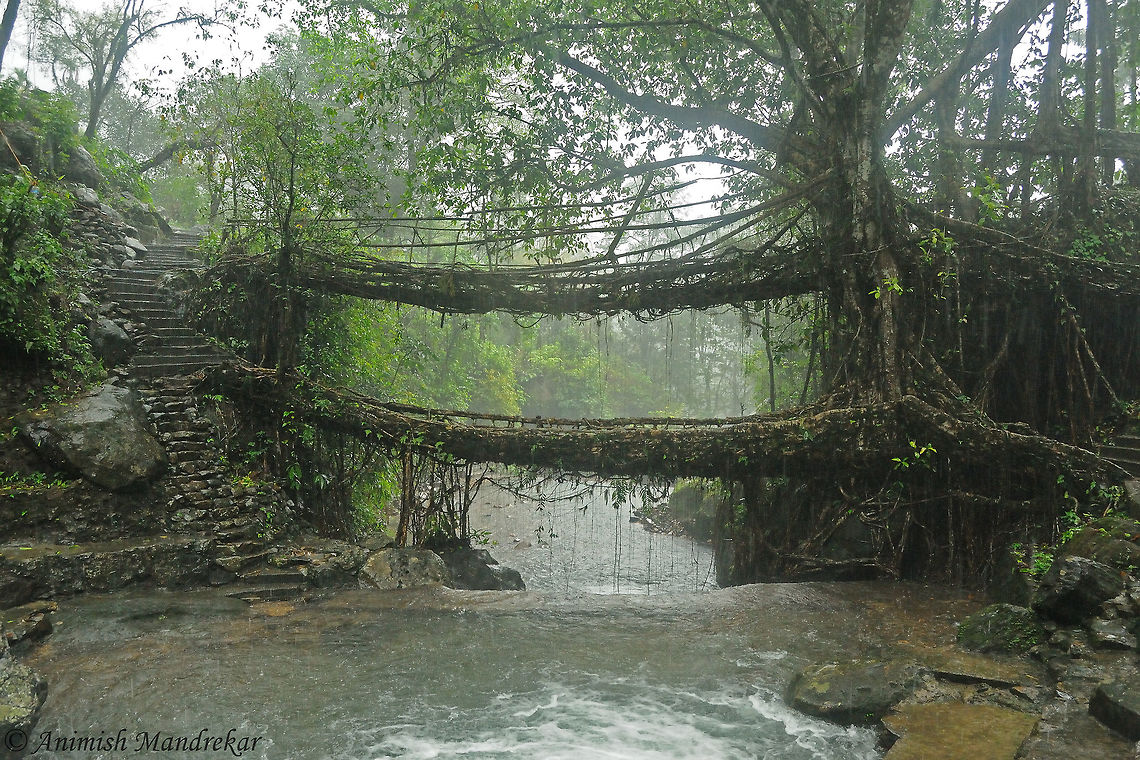 Species introCountry intro
Species introCountry intro
Double decker Living Root Bridge (Ficus elastica)
Living root bridges are a form of tree shaping common in the southern part of the Northeast Indian state of Meghalaya. They are handmade from the aerial roots of living banyan fig trees, such as Ficus elastica by the Khasi people and War Jaintia peoples of the mountainous terrain along the southern part of the Shillong Plateau.
The pliable tree roots are made to grow through betel tree trunks which have been placed across rivers and streams until the figs' roots attach themselves to the other side. Sticks, stones, and other objects are used to stabilize the growing bridge. This process can take up to 15 years to complete. The useful lifespan of any given living root bridge is variable, but it is thought that, under ideal conditions, they can in principle last for many hundreds of years. As long as they grow, they are formed from healthy remains, they naturally self-renew and self-strengthen as their component roots grow thicker.
The local Khasi people do not know when or how the tradition of living root bridges started. The earliest written record of Cherrapunji's living root bridges is by Lieutenant H Yule, who expressed astonishment about them in the 1844 Journal of the Asiatic Society of Bengal.

''Ficus elastica'', the rubber fig, rubber bush, rubber tree, rubber plant, or Indian rubber bush, is a species of plant in the fig genus, native to northeast India, Nepal, Bhutan, Burma, China , Malaysia, and Indonesia. It has become naturalized in Sri Lanka, the West Indies, and the US State of Florida.

comments (1)